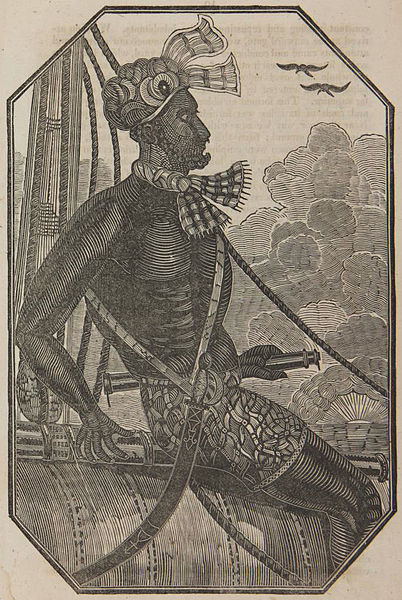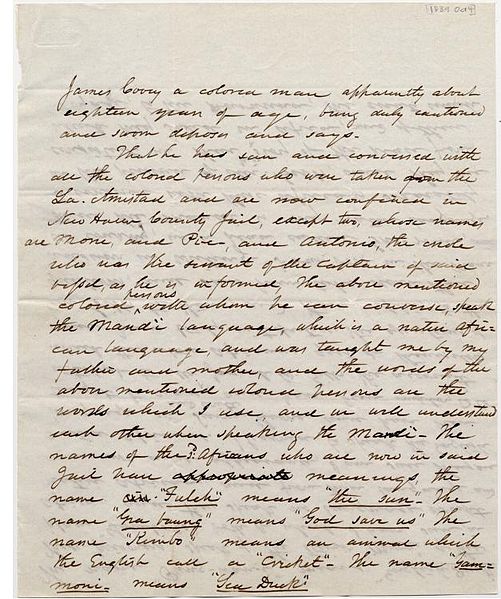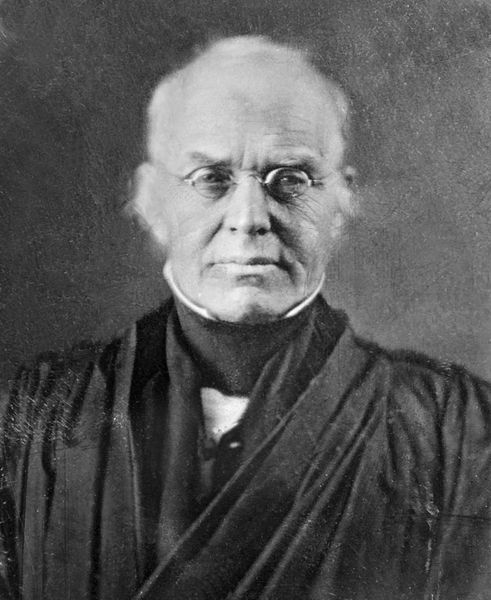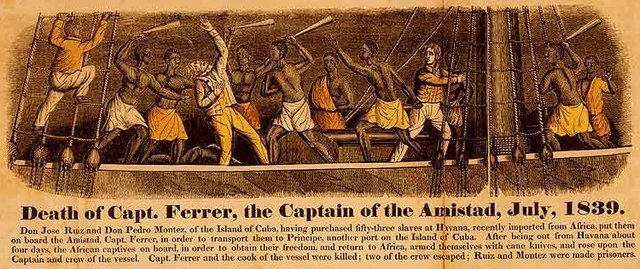United States v. The Amistad
United States v. Schooner Amistad, 40 U.S. 518 (1841), was a United States Supreme Court case resulting from the rebellion of Africans on board the Spanish schooner La Amistad in 1839. It was an unusual freedom suit that involved international diplomacy as well as United States law. The historian Samuel Eliot Morison described it in 1969 as the most important court case involving slavery before being eclipsed by that of Dred Scott v. Sandford in 1857.
Sengbe Pieh, leader of the La Amistad uprising, pictured as a Muslim (1839). Beinecke Rare Book & Manuscript Library
First page of the deposition of James Covey concerning La Amistad prisoners held in the New Haven, Connecticut jail, October 4, 1839
Lewis Tappan, American evangelical abolitionist and founder of the "Amistad committee"
Joseph Story gave the Supreme Court's majority judgment.
La Amistad was a 19th-century two-masted schooner owned by a Spaniard living in Cuba. It became renowned in July 1839 for a slave revolt by Mende captives who had been captured and sold to European slave traders and illegally transported by a Portuguese ship from West Africa to Cuba, in violation of European treaties against the Atlantic slave trade. Spanish plantation owners Don José Ruiz and Don Pedro Montes bought 53 captives in Havana, Cuba, including four children, and were transporting them on the ship to their plantations near Puerto Príncipe. The revolt began after the schooner's cook jokingly told the slaves that they were to be "killed, salted, and cooked." Sengbe Pieh unshackled himself and the others on the third day and started the revolt. They took control of the ship, killing the captain and the cook. Three Africans were also killed in the melee.
La Amistad off Culloden Point, Long Island, New York on August 26, 1839 (contemporary painting, artist unknown)
Freedom Schooner Amistad at Mystic Seaport in 2010
1840 engraving depicting the Amistad revolt
A print of Cinqué that appeared in The Sun on August 31, 1839








